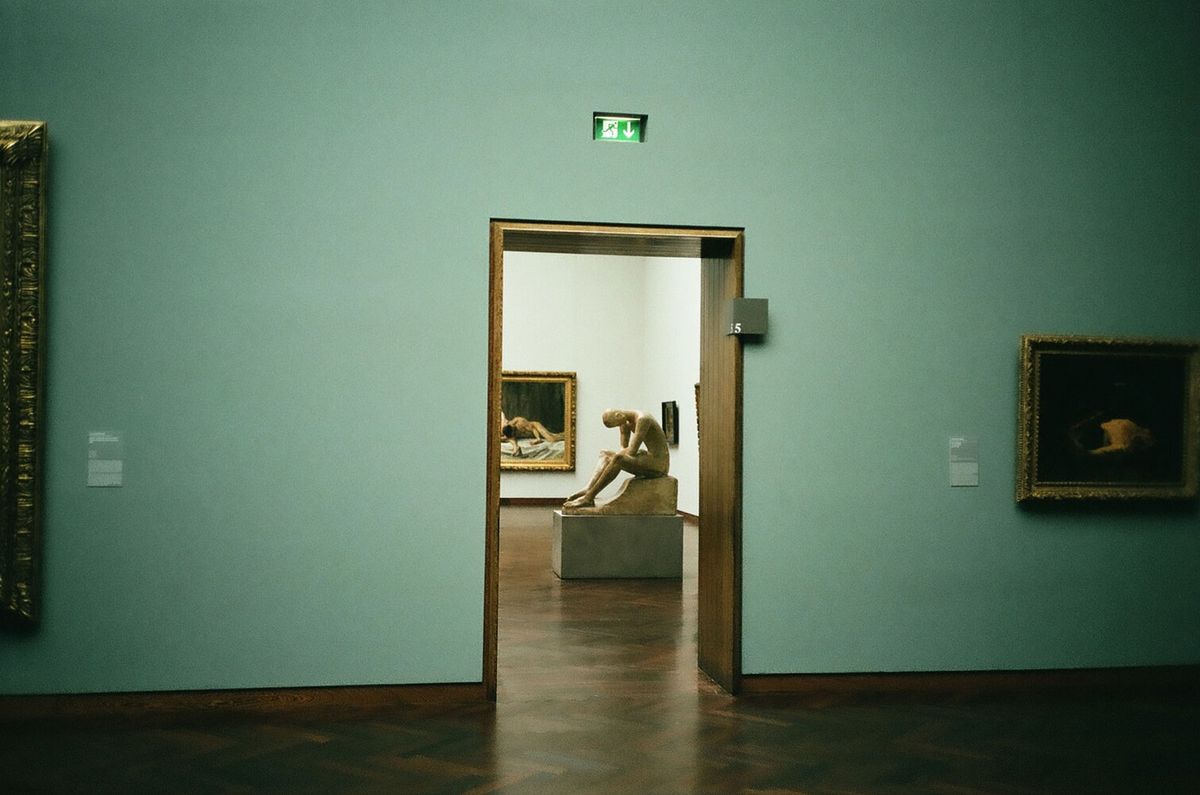As museums in Europe remain on lockdown to help stop the spread of the coronavirus (Covid-19), industry professionals are warning that they need to take decisive action to keep their collections safe. Deserted streets, under-staffed museum buildings and police forces distracted by the public health crisis could serve as an invitation to opportunist crooks.
“Museums don’t have the money to have full staffing for security [while they remain closed],” says Philip Austin, a loss-adjuster at Fine Art Specie Adjusters Ltd. “They are furloughing staff and operating a skeleton type of business. I can see the criminal fraternity thinking this is Christmas.” He notes that museum break ins often occur on public holidays “and this is like a permanent bank holiday.”
There has already been one major theft from a shuttered museum, a Van Gogh painting taken in the early morning of 30 March from the Singer Laren museum in the Netherlands, which had closed a few days earlier. “If someone had been sitting behind the glass security door then the break-in possibly wouldn’t have happened,” notes Karola Richter, an expert in museum security at the German Museums Association and head of security at the Landesmuseum Württemberg. “In case a museum does not have enough security staff, we recommend that staff put particularly valuable exhibits into alternative secure spaces” adds Richter who has been working on a pandemic guide for museums.
Even for large, well-staffed museums that are fully guarded in lockdown, the risk of theft is heightened in the current crisis. At the Victoria and Albert Museum in London, security chief Vernon Rapley has increased regular patrols of the galleries. “We think the risk of break-ins may be higher because there’s been a lot of tweeting about museums temporarily closing. We’re keen to let people know the collections are guarded.”
In addition, Rapley is planning for two possible coronavirus scenarios. The first entails large amounts of staff getting sick and not being able to come into work. It is standard practice for large museums to have emergency response and business continuity plans in place, Rapley says. “We plan for large amounts of staff not coming to work because of industrial action, for example, so it’s just a matter of adapting these plans for the current scenario.” The second “potentially bigger risk”, Rapley says, is the increased pressure on emergency services in the current crisis. “So, we’ve designed our security system to slow thieves down so that police are able to arrive on site.”
So far, police in the German state of Baden-Württemberg are able to provide services as usual, despite being one of the regions hardest-hit by the coronavirus with 16,000 cases on 3 April, says Torsten Schulz, a specialist police advisor to museums at the Baden-Württemberg State Crime Office. “We would still be able to respond to an alarm in a museum with the usual speed. It may even be the case that police can respond more quickly because the roads are empty. We also notice that certain crimes have diminished considerably in the lockdown—shop thefts and street crime—so police may even have more capacity than usual. And if there are four or five people in a car at night, we would look more closely than usual.”
Worry about fire too
Other specialists warn that the greatest risk faced by museums in lockdown is not theft but damage to objects, works of art and buildings from fire or burst water pipes. “If you ask any insurer, they’ll tell you fire is still the biggest worry as it usually leads to the largest losses and therefore the largest claims,” says Adam Prideaux of Hallett Independent, which insures numerous museums in Britain. “Small, regional museums that do not have the resources for full-time security staff on site during the lockdown are being visited by staff perhaps once a week. And when museums are empty, a small electrical fault or a leaking pipe may go undetected and can cause considerable damage,” Prideaux says. “However, theft is now also a much higher concern than it was a few weeks ago.”
In other ways, art may actually be safer in lockdown. “Most of our claims relate to works of art damaged while in transit,” notes Erin Bast, a senior underwriter for the art insurance firm Huntington T. Block. “As no art is being moved right now, this is less of a concern at the moment.”
Speak to your insurance provider
The first thing museums should do is review their existing insurance policies, says Philip Austin. Some insurance policies have occupancy clauses, meaning that cover can be restricted if a property is closed for a certain period of time and other large providers introduced pandemic exclusions after the 2003 Sars outbreak.
But, by and large, the insurance industry is supporting museums, Prideaux says. “Most insurers have said: ‘as long as you’re checking your museum once a week,’ we’ll cover you. Nobody has put up premiums or restricted coverage or said ‘we’re not covering you for theft’. But it’s important that museums take the steps they can and follow guidelines provided by their insurers. Important precautions include checking fire and security alarm systems, shutting off the water supply and maintaining environmental conditions, Prideaux notes. “I advised one remote museum to put up concrete blocks in the drive and also to install CCTV which you can do very inexpensively. It’s amazing the number of museums that don’t have CCTV.”
Some insurers are also advising museums, where possible, to return highly-publicised exhibition loans currently hanging on the walls of closed galleries.
Ultimately, the global pandemic will make museums reconsider their approach to collection safety. “Insurance customers in the US may have underestimated the risks of terrorism until 9/11 happened,” Erin Bast says. "Now, the coronavirus will have museums re-consider how they can keep their collections safe for long periods of time with minimal staffing.”


